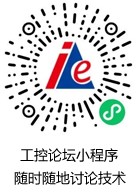安全仪表系统的十个事实之九(中英文对照) 点击:382 | 回复:1
TRUTH # 9
Given a choice, the implementation and installation of your SIS
should not be entrusted to strangers.
Choosing an SIS implementer can be as important as choosing the product itself. No matter how well the system is designed or manufactured, failures are likely to occur if the implementation team is not following proper procedures, is not experienced, or lacks adequate technical qualification for the tasks they must perform.
Industry Standards and Best Practices call for competence, specifically IEC 61508/ IEC 61511 / ANSI S84.01 and other international and national safety standards, as well as national regulatory agencies, require that all personnel involved in any stage of the SIS safety life cycle have proven and documented competency for the tasks they are assigned. IEC 61511-1 the process industry’s Functional Safety standard for Safety Instrumented Systems for on Paragraph 5.2.2.2 indicates that persons, departments or organizations involved in safety lifecycle activities shall be competent to carry out the activities for which they are accountable.
Some of the areas of competence are:
Functional Safety
Process Control and Process Automation
Instrumentation and Control Principles
Application Programming
Technical domain knowledge on the SIS platform
Understanding the operation principles of the SIS platform
Understanding the operation restriction and maintenance procedures on the SIS platform
Additionally there should be a number of implementation practices and proven procedures to ensure the quality of the implementation, those procedures or accepted best practices should be documented and ideally be part of the ISO certification and in general of the quality assurance procedures of the implementer.
Sounds trivial and that’s why it’s very easy to overlook until we run into trouble, the potential implications range from unexpected shutdowns, unreliable operation of the SIS, nuisance alarms and the inability to perform the task for which it was designed among others. According to studies almost half of all systematic and human failures are caused by incorrectly specified requirements because the requirements are not fully appreciated or the realization of those requirements is not fully understood.
Selecting a reliable SIS platform to meet the requirements of the application is a very important aspect of the Safety Lifecycle, however making sure the implementation team is competent to perform their mission, the experience and track record of the implementation team not only on similar applications but also on the SIS platform selected and in Functional Safety should be an important criteria in defining the implementation team.
An example of track record is the number of system installations including installation in similar applications such as BMS, SIS, HIPPS or F&G. Look for a significant number of successful installations and for low number of failures on demand over the lifecycle of those installations.
Go to Truth 9 link at www.triconex.com/truth9.
假设已经作出选择,你的SIS的实施和安装不要委托给陌生人
作者:不详
单位:Invensys
来源:Invensys
选择SIS的实施公司与选择产品本身一样重要。不管系统设计或制造的多好,如果实施公司没有遵循恰当的程序,没有经验或缺乏完成任务恰当的技术资格,可能会发生故障。
工业标准和最好的经验要求资格,特别是IEC 61508/ IEC 61511 / ANSI S84.01和其他的国际和国内安全标准以及国家管理机构,要求所有涉及SIS安全生命周期任何阶段的人员都要证明其有能力从事分配给自己的工作。在IEC 61511-1过程工业安全仪表系统的功能安全标准5.2.2.2节指出,人员、部门和涉及安全生命周期活动的组织应有资格从事其负责的活动。
一些资格领域如下:
l 功能安全
l 过程控制和过程自动化
l 仪表和控制原理
l 应用程序编程
l SIS平台技术领域知识
l 理解SIS平台运行原理
l 理解SIS平台的运行限制和维护程序。
另外,应有一定量的实施经验和已被证实的确保实施质量的程序。那些程序或接受最好的经验应记录下来,理想情况下是ISO认证的一部分,通常是实施公司的质量保证程序。
听起来是微不足道的,那是为什么很容易忽视,直到我们陷入困境时才醒悟的原因,潜在的牵连包括从未料到的关断、不可靠的SIS运行、讨厌的报警和不能完成设计的任务。根据研究,几乎所有系统故障和人为故障的一半是由不正确说明的要求引起,因为没有充分地理解要求或没有充分理解那些要求的实现。
选择满足应用要求的可靠的SIS平台是安全生命周期非常重要的方面,然而,确定实施公司有能力完成其任务,在同类应用和选择的SIS平台和功能安全上的经验和跟踪记录是确定实施公司的重要评价标准。
跟踪记录的例子是系统安装的数量,包括在同类应用(例如,BMS、SIS、HIPPS或F&G)中的安装。寻找贯穿那些生命周期的大量成功安装和要求时小量失败安装的数量。
- BACnetScan使用手册
 [2938]
[2938] - 电机没停止,瞬时再启动时的冲...
 [7146]
[7146] - ab plc模拟量如何处理,最好给...
 [9172]
[9172] - 4-20MA模拟电流怎么测量
 [12912]
[12912] - 英语资料翻译
 [2300]
[2300] - 三菱PLC学习资料
 [7869]
[7869] - proface触摸屏错误代码RHAA0...
 [5251]
[5251] - 注册电气工程师扫盲贴,不了解...
 [18314]
[18314] - 时间继电器接法问题,谢谢大家...
 [3466]
[3466] - IGBT导通瞬间,有大电流冲击吗...
 [8140]
[8140]

官方公众号

智造工程师
-

 客服
客服

-

 小程序
小程序

-

 公众号
公众号

















 工控网智造工程师好文精选
工控网智造工程师好文精选
